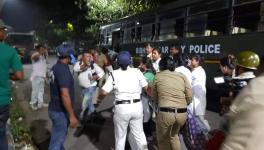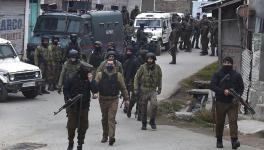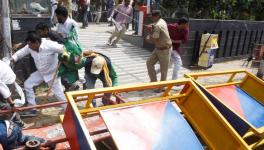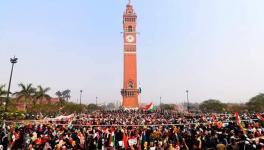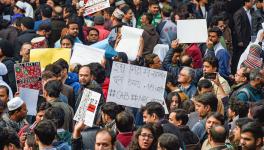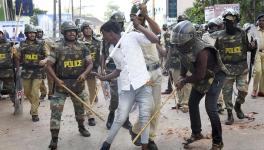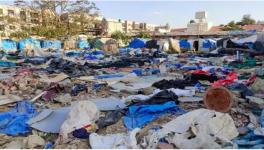CAA: Rampur’s Forgotten Protest Victims are Also its Poorest
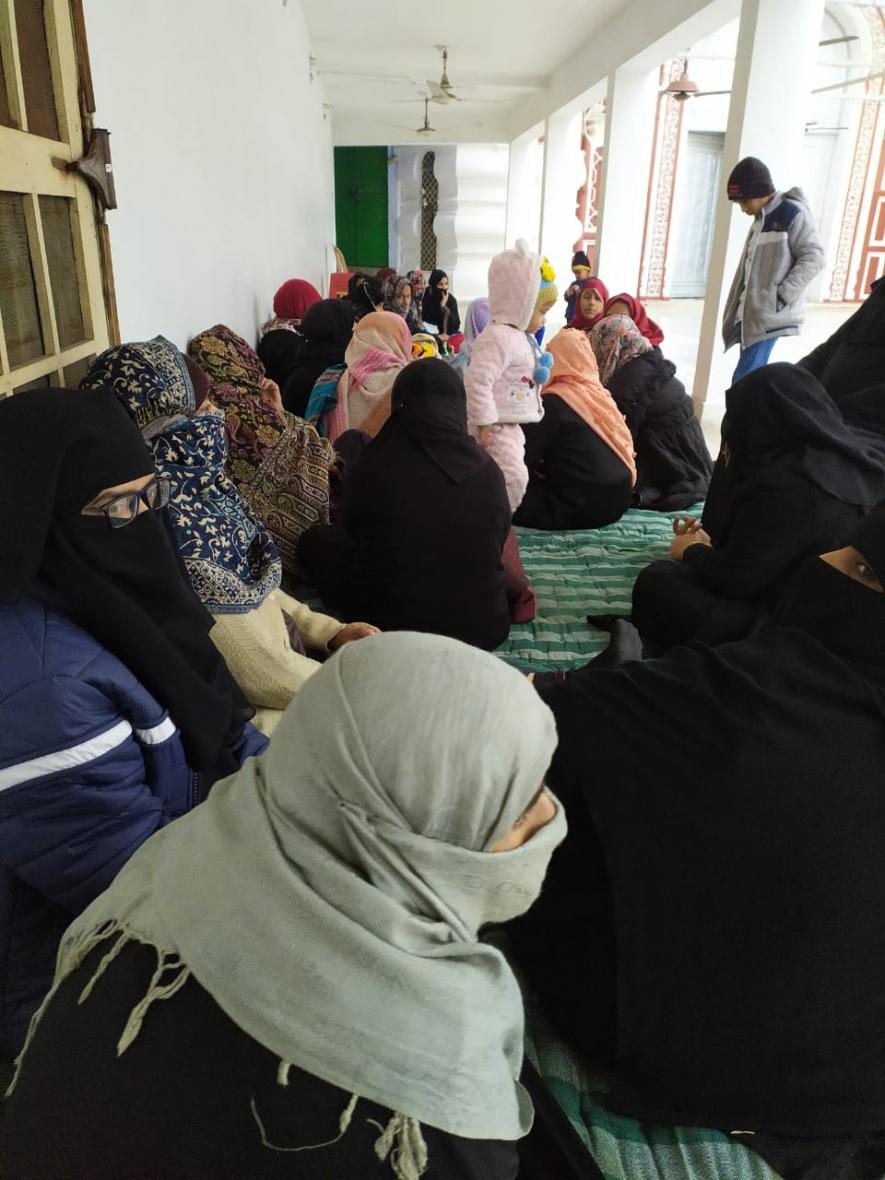
On 21 December 2018, large-scale protests against the Citizenship Amendment Act (CAA) rocked Uttar Pradesh’s Rampur city. This was not the lone place in the state where protests were held against the discriminatory law. Protests in the state [and the rest of the country] are still going on; but the difference in Uttar Pradesh and Rampur is the excessive use of force by the police. Almost two dozen people lost their lives in the state during the crackdown on the protests. A large number were arrested, many of whom continue to languish in jails, largely on flimsy grounds. One youth lost his life in Rampur too, allegedly in police firing.
Muslim-majority Rampur, with its princely past, is mired in poverty and illiteracy like no other part of Uttar Pradesh. Census 2011 pegged the literacy rate in Rampur at 53.7% far below the national average of 64.3%. Rampur is one of the most backward regions of a state that is among the most backward and poor parts of the country. In India, on average, the poor make up 21.92% of the population, but in Uttar Pradesh, more than 43% of the population is poor, according to a report published by the Reserve Bank of India earlier this month.
What Really Happened in Rampur
The imam of Rampur’s Jama Masjid, Mufti Mehboob Ali, gave a call for protest a few days before 21 December, almost a week after the CAA was passed by both houses of Parliament and the assent of President Ramnath Kovind turned it into law. Rampur has the highest percentage of Muslims in the state, at 70.2% in 2011, compared with the state average of just below 20% Muslim population.
Rampur was not among the very first places where protests broke out in Uttar Pradesh. It was among the last to call for agitations against the amended citizenship law. Yet, given the pressure the administration put on the protesters elsewhere, on the evening of 20 December, Mufti Mehboob Ali withdrew his call for protests. By then it was too late and news of the cancellation did not reach people who had already decided to gather at the huge Idgah Maidan in the heart of town. At around 11 am, a large number of people gathered at the site were allegedly caned by the police, which also allegedly opened fire at them as their numbers swelled. This resulted in a melee in which one died and many were injured, including several policemen.
Nevertheless, the situation in the city immediately after the protest was not very different from other cities. According to local activists, the high-handedness of the police and city administration was immediately apparent. A large number of people who were picked up from their homes the same day and the next day were charged under stringent sections. [They have been imprisoned ever since, and their bail pleas are scheduled to be heard on Friday, 7 February.]
The fear in the city is still palpable. Even weeks after the incident, the families of victims are largely not ready to speak on-the-record. The reason is the notices sent by the administration to those who have been arrested, for destruction of public property, notwithstanding that most of the arrested are the poorest of the poor.
In Rampur, so far, only two men have been granted bail. The police had levelled charges of rioting and attempt to murder against 34 of the arrested persons. They have been dropped against 26 of them. This only goes to show that the police was high-handed in cracking down on the protesters and arbitrarily applied tough sections of the law.
The Victims’ Suffering
As the bail hearings come up, those families of Rampur whose members have been arrested are increasingly anxious. While in many other cities, such as Bijnor, people have been able to come together, seek legal recourse and secure bail, Rampur has only seen two released on bail so far. The police and administration have been making assurances of a speedy bail, but nothing has changed so far, which is pushing the residents to the verge of hopelessness.
Most of those arrested are daily labourers, zardozi workers, rickshaw-pullers and masons. The fact that the primary or sole breadwinners are behind high prison walls has left their families struggling to make ends meet. Unsurprisingly, most of them are actually unable to do so.
Sadaqat Ali Khan, whose oldest son, 21-year old Shahnawaz Ali Khan, is languishing in jail since December 22, suffered a brain haemorrhage recently. His wife says that he has become so disoriented that the old man does not take his medicines. With the sole breadwinner in jail, they cannot afford medicines anyway. Had it not been for the support extended by their neighbours and other Good Samaritans, they would have been starving by now.
Shahnawaz’s mother weeps inconsolably as she narrates how her son was arrested, beaten by the police and then jailed. She says, “Shahnawaz was not among the protesters. He is not interested in politics, and has no time for it. He is the only breadwinner in the family and ever since he is in jail we are almost starving.”
Even worse is the agony of Shabnam, wife of Mohammad Mahmood, who is languishing in jail since the last 45 days. This mother of a two-year-old daughter, Shabnam, is anguished and despairing. They live in a rented accommodation, and Khan being a daily-wager, have no savings. Her husband was picked up by the police on the morning of 22 December from Nai Basti, Rampur’s poorest neighbourhood. Since then, she has been running from pillar to post to keep track of her husband’s legal case. This is tough for the young woman, whose landlord wants her to pay the rent or vacate the premises. She also says that her husband was not among the protesters.
“My husband is a zardozi worker. We do not have our own house, nor any relatives. My husband was in the house when in the police barged in and arrested him early in the morning. Ever since, we have nothing to eat at home. My young daughter would have gone to bed hungry had the neighbours not offered her milk. We are in a dire situation,” says Shabnam.
The Protest at Jama Masjid
Sheer despair drove many women from the affected families to launch a sit-in within the sprawling Jama Masjid at Rampur. Initially, there were efforts to dissuade them, but the women insisted that the Jama Masjid had called for a demonstration and now that these men were in jail, their release should be ensured. The women’s sit-in also brought to the fore the deplorable condition of these families and prompted some half-hearted efforts on the part of the ulama to talk to administration.
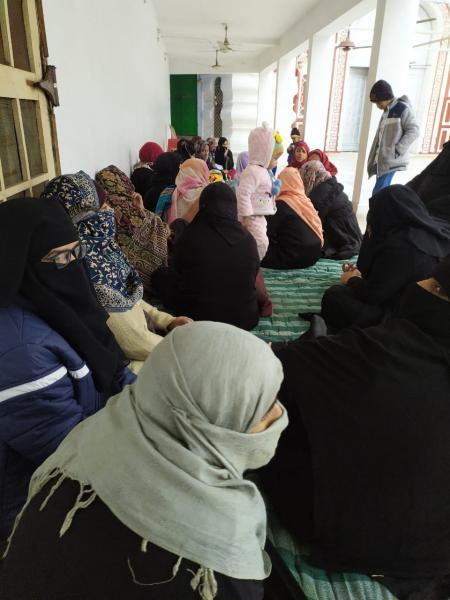
Farhat Jamali, the caretaker of the largest dargah of Rampur, Dargah Hafiz Saheb, the mausoleum of Hafiz Shah Jamalullah, is one of the very few people who are taking a keen interest in the cases of affected people. When asked why the people are not out on bail thus far said, “We are trying to ensure that charges against the people are dropped and they do not have to fight the cases in courts after coming out.” He also said that it is after negotiations with the police that many stringent cases were dropped, igniting hope that most will be granted bail soon.
Police have been accused of using disproportionate force not just in Rampur, but across the state. A fact-finding team that included prominent rights activists Harsh Mander, John Dayal and Yogendra Yadav, has claimed that the violence during the agitation was incited by the state police and that the Muslims in the area were tortured. In a statement, the activists said, “The goal is not just to suppress all dissent against CAA or NRC [National Register of Citizens] in Uttar Pradesh, but to send a signal to anyone who may dare to raise a voice against anything.”
But this committee had not visited Rampur. The hopelessness in Rampur, particularly among the affected people, is perhaps partly explained by their stories never coming out. Had the women of Rampur not decided to take matters in their own hands and start a dharna at the Jama Masjid, their plight would have remained secret even now.
The author is a writer and columnist. The views are personal.
Get the latest reports & analysis with people's perspective on Protests, movements & deep analytical videos, discussions of the current affairs in your Telegram app. Subscribe to NewsClick's Telegram channel & get Real-Time updates on stories, as they get published on our website.









